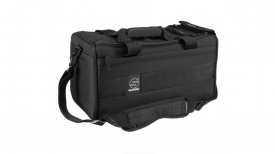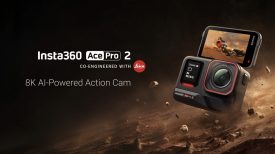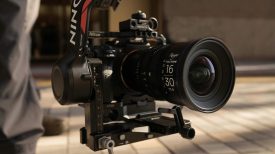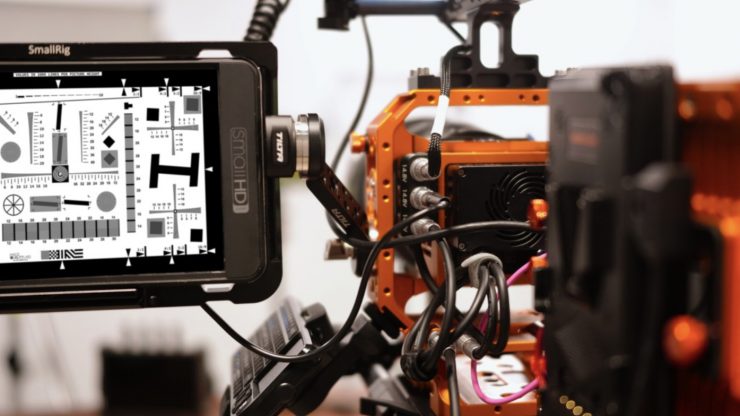
Pawel Achtel ACS has conducted an MTF camera comparison test with the help of the Australian Cinematography Society to see how sharp his 9×7 Digital Cinema Camera is when put up against high end digital cinema cameras from ARRI, RED, Sony, and Blackmagic.
If you are not familiar with the Achel 9×7 Digital Cinema Camera you can read my in-depth article about it here.
All camera sensors are different are the photo-site designs as well. Different optical stacks also offer vastly different levels of contrast (MTF) that can be measured and perceived per pixel. It is not the count that matters, but the quality of the photo-sites that is far more important. In this test Pawel Achtel ACS, Susan Lumsdon, Elena De Bruijne, Alexei Vanamois, Sean Dooley (ARRI), and Anthony Mannionare set out to find the actual sharpness of different cameras and designs and how they compare in respect to their resolutions.
How the test was conducted
The team compared RED Raptor, ARRI LF, ARRI ALEXA 35, Sony Venice 2, Blackmagic URSA 12K and ACHTEL 9×7 digital cinema cameras.
MTF (Modulation Transfer Function) was computed using IMATEST Master v22.2 using SFR (Spatial Frequency Response) method analysing slanted edge profile. The ISO 12233 test target was used. Each capture was meticulously checked for best focus.
Lens used was Sigma ART 135mm T2.0 set at T4.0, which is capable of resolving 300LP/mm in the centre.
All cameras were set to the highest image quality possible and, where possible, the vendor’s specific software for image creation was used. Sharpening was set to zero.
ACHTEL 9X7
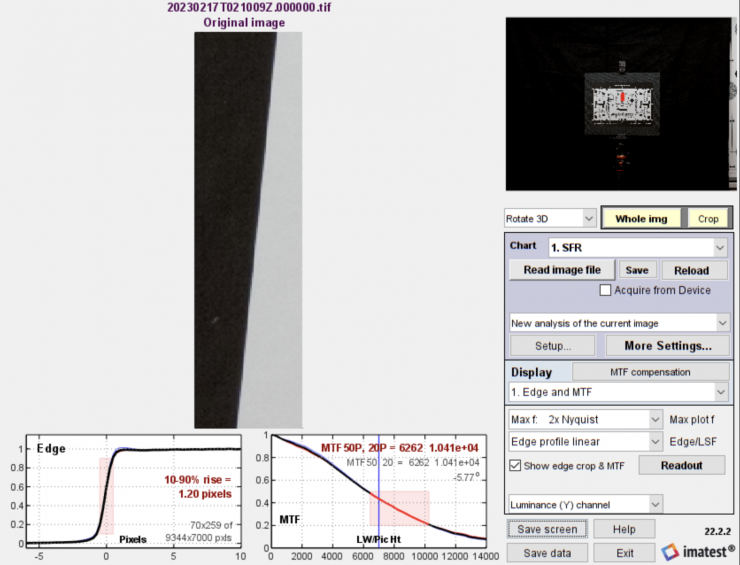
MTF 50 = 6,262 LW/PH (number of line widths per picture height with at least 50% contrast)
MTF 20 = 10,410 LW/PH (number of line widths per picture height with at least 20% contrast)
SONY VENICE 2
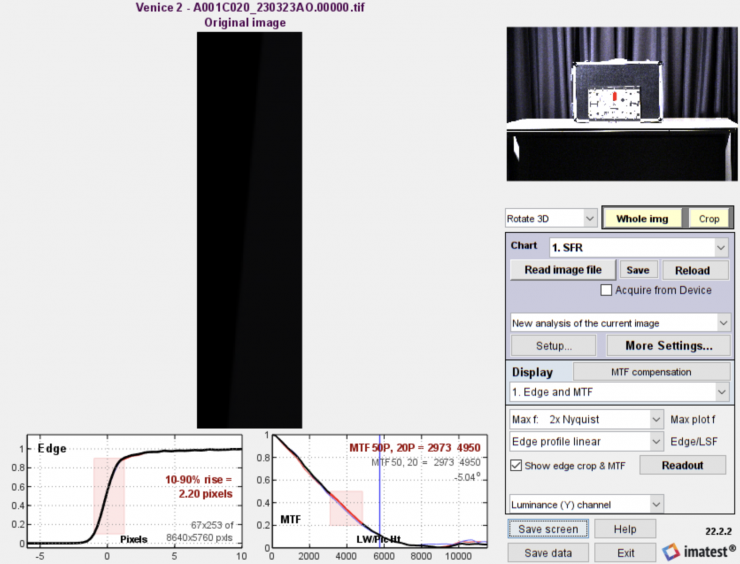
MTF 50 = 2,793 LW/PH (number of line widths per picture height with at least 50% contrast)
MTF 20 = 4,950 LW/PH (number of line widths per picture height with at least 20% contrast)
Note: The test image was supplied by Sony Japan and Pawel used it to calculate MTF because it was sharper than what the team managed to obtain during their camera test. Whilst the camera is capable of delivering reasonable levels of sharpness, it is worth mentioning that it is hard to ensure that it is in focus.
RED RAPTOR
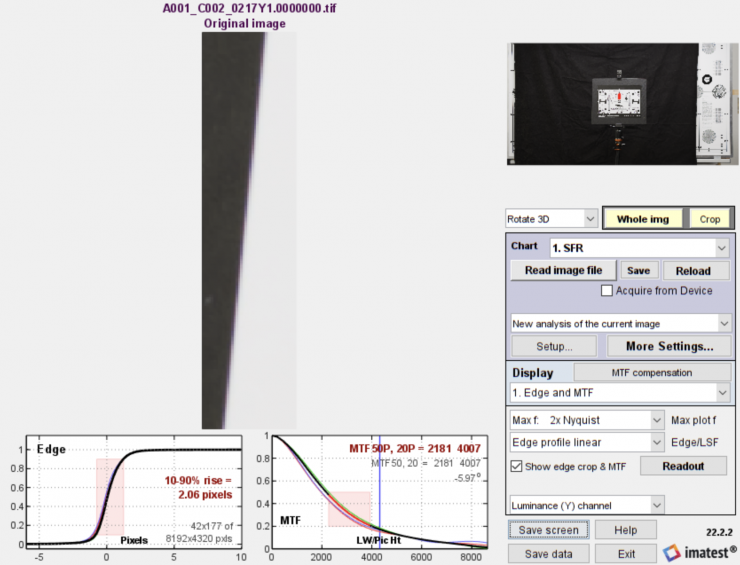
MTF 50 = 2,181 LW/PH (number of line widths per picture height with at least 50% contrast)
MTF 20 = 4,007 LW/PH (number of line widths per picture height with at least 20% contrast)
ARRI ALEXA Mini LF
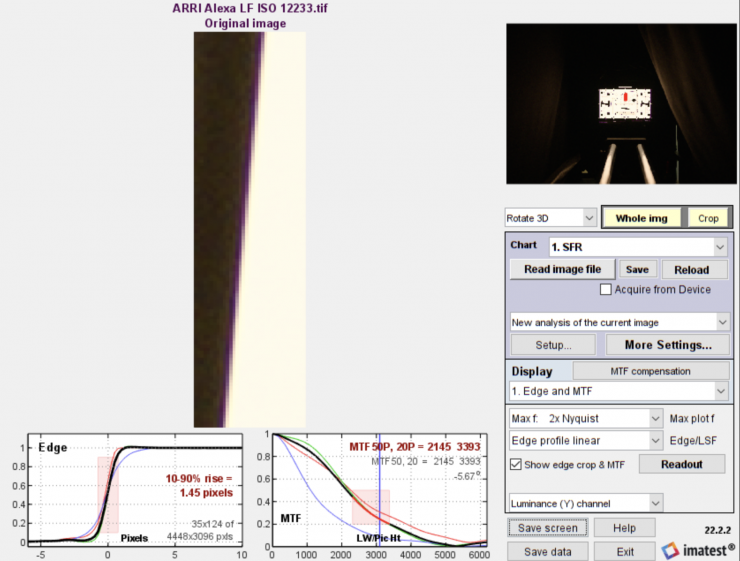
MTF 50 = 2,145 LW/PH (number of line widths per picture height with at least 50% contrast)
MTF 20 = 3,393LW/PH (number of line widths per picture height with at least 20% contrast)
ARRI ALEXA 35
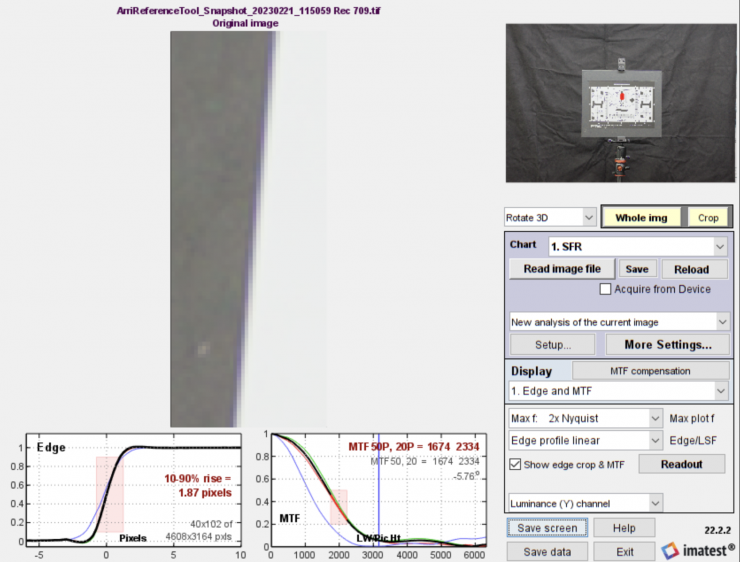
MTF 50 = 1,674 LW/PH (number of line widths per picture height with at least 50% contrast)
MTF 20 = 2,334 LW/PH (number of line widths per picture height with at least 20% contrast)
Note: Despite setting sharpening to 0, it is evident that artificial sharpening was applied by ART (ARRI Reference Tool). For this reason the team believes that the actual MTF figures for this camera are somewhat lower than what was measured.
BLACKMAGIC URSA 12K
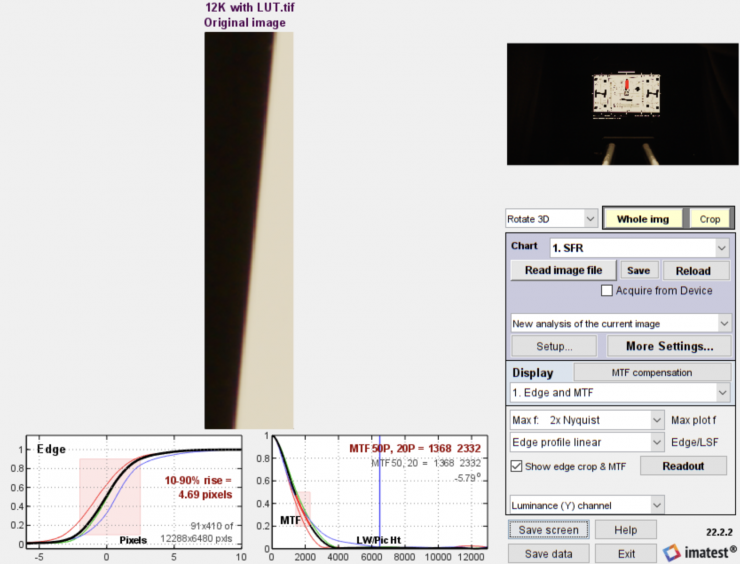
MTF 50 = 1,368 LW/PH (number of line widths per picture height with at least 50% contrast)
MTF 20 = 2,332 LW/PH (number of line widths per picture height with at least 20% contrast)
So, just how sharp is the 9×7 Digital Cinema Camera?
Based on data provided by Kodak, Pawel calculated the MTF (modulation transfer function) for 15-70mm film. The MTF 20 (*), which is a measure of number of lines that can be discerned with at least 20% contrast, turns out to be around 8,320 LW/PH (line widths per picture height). This is without taking consideration of the limitations of large format optics (lenses). Based on Manufacturer’s data, some of the sharpest large format lenses deliver about 6,240 LW/PH, which is what we think is the upper limit of what is possible to reproduce on 15-70mm film today. Older optics may have not been as sharp.
According to measurements obtained during Australian Cinematographers Society’s tests, the top three digital cinema cameras (including some of the best cinema lenses) measure the following resolutions at MTF 20:
- ACHTEL 9×7: 10,410 LW/PH
- SONY Venice 2: 4,950 LW/PH
- RED Raptor: 4,007 LW/PH
You would need more than four Sony Venice 8.6K cameras stitched seamlessly to achieve the same sharpness as single 9×7 camera. Likewise, you need as many as six RED Raptors, or ARRI LF cameras to equal single 9×7 camera in terms of resolving detail as well as measured (and perceived) sharpness.
The team knew that resolution (measured in pixels or photo-sites) has nothing to do with actual sharpness (measured in number of lines or line pairs per picture width or height) or details that a camera can reproduce.
The former is useful to DIT to estimate hardware and storage requirements. The latter is useful to DOP, VFX Supervisor and Producers to ensure the images are of the required quality.
The testing showed that the highest resolution camera tested (Blackmagic URSA 12K) with highest number of pixels (or photo sites) produced the lowest sharpness (it actually produced also the highest amount of artefacts and aliasing)
The team also found that the ARRI ALEXA Mini LF is almost as sharp as RED Raptor 8K camera.
They also learned that Sony Venice 2 8.6K is significantly sharper than RED Raptor 8K, if and when you can actually get the image in sharp focus (a group of respected ACS members couldn’t).
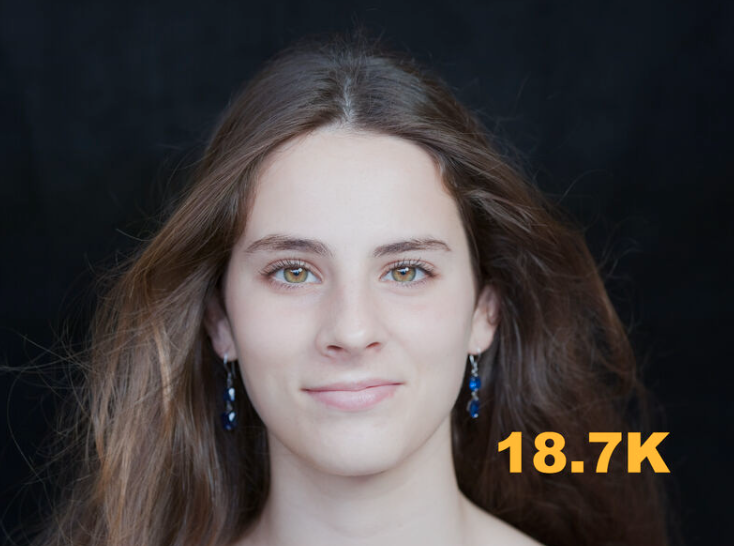
Pawel Achtel ACS has also made a 18.7K, 262 Megapixels, 32-bit EXR frame grab shot with 9×7 Digital Cinema Camera downloadable. The 9×7 Digital Cinema Camera is now fully color managed and colorimetric (color accurate) out of the gate. So what you see in the monitor is the same as RAW, dailies and EXR transcode. No color correction is needed, not even a color temperature change.
This is a preview of the upcoming workflow software v. 5.2. A single frame can be downloaded for evaluation from the link below. Highlight reconstruction (already available for Cinema DNG delivery) is still being worked on.



